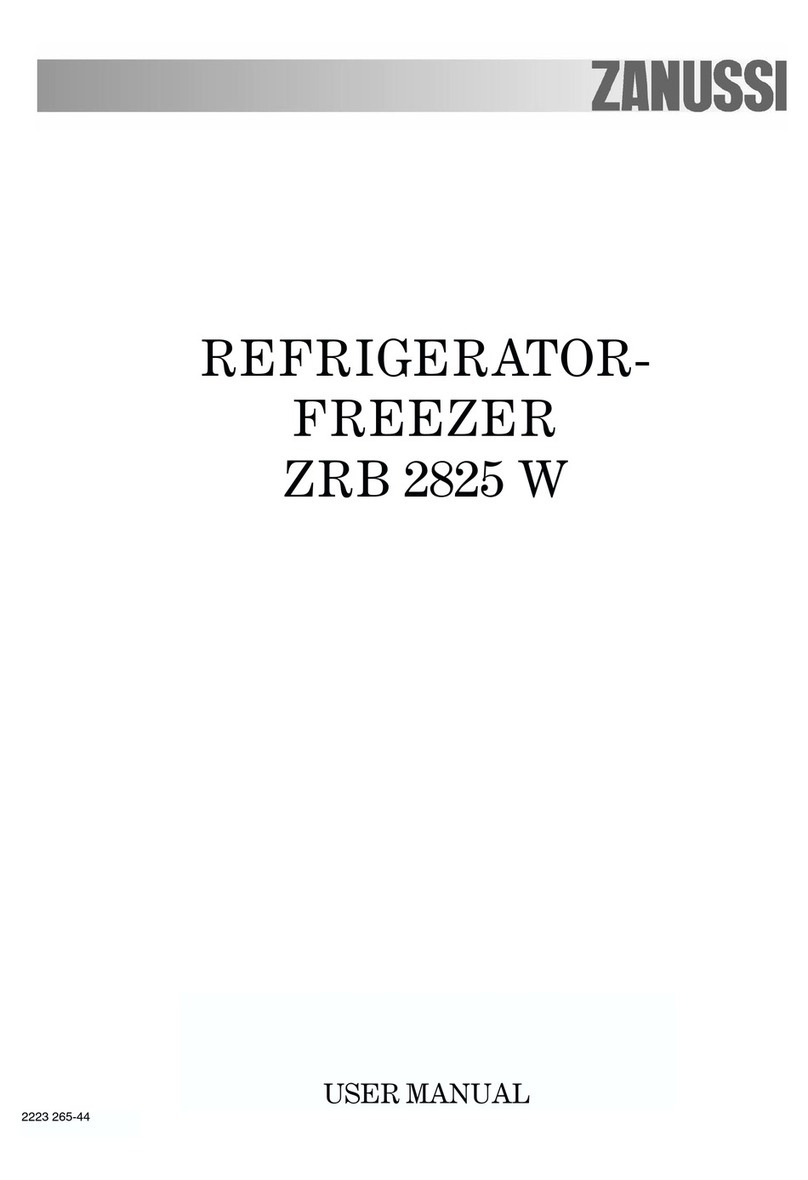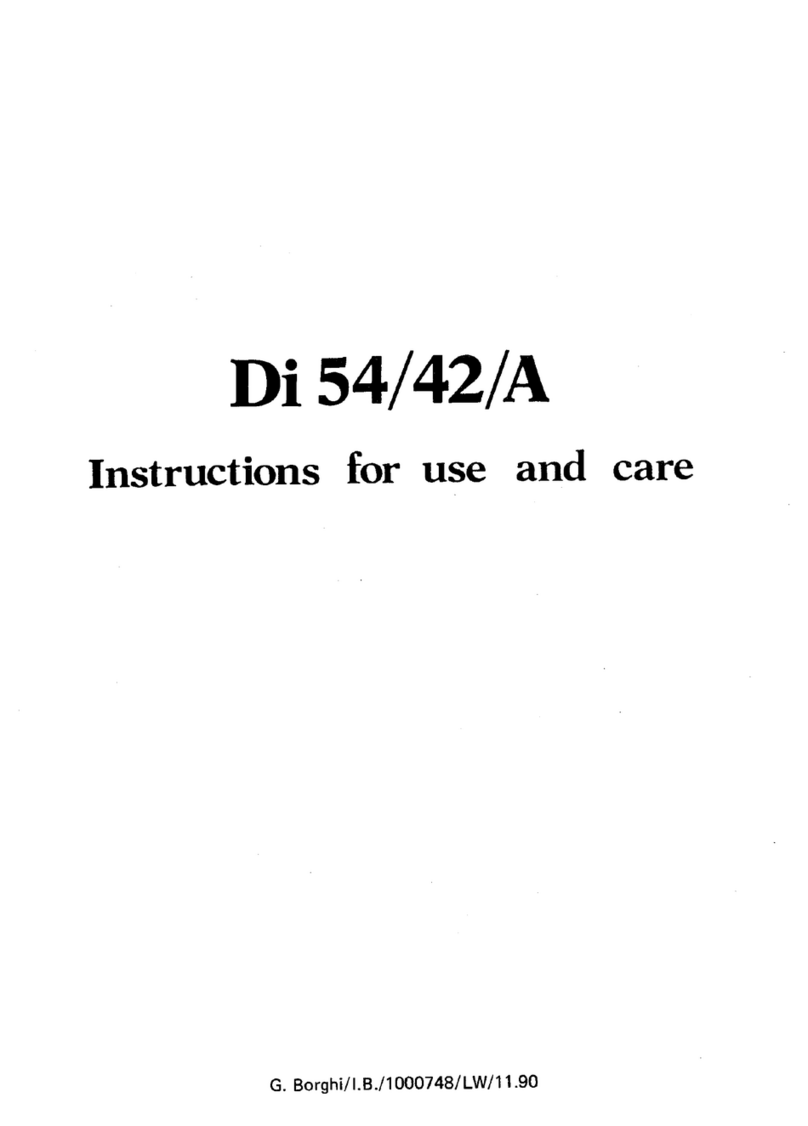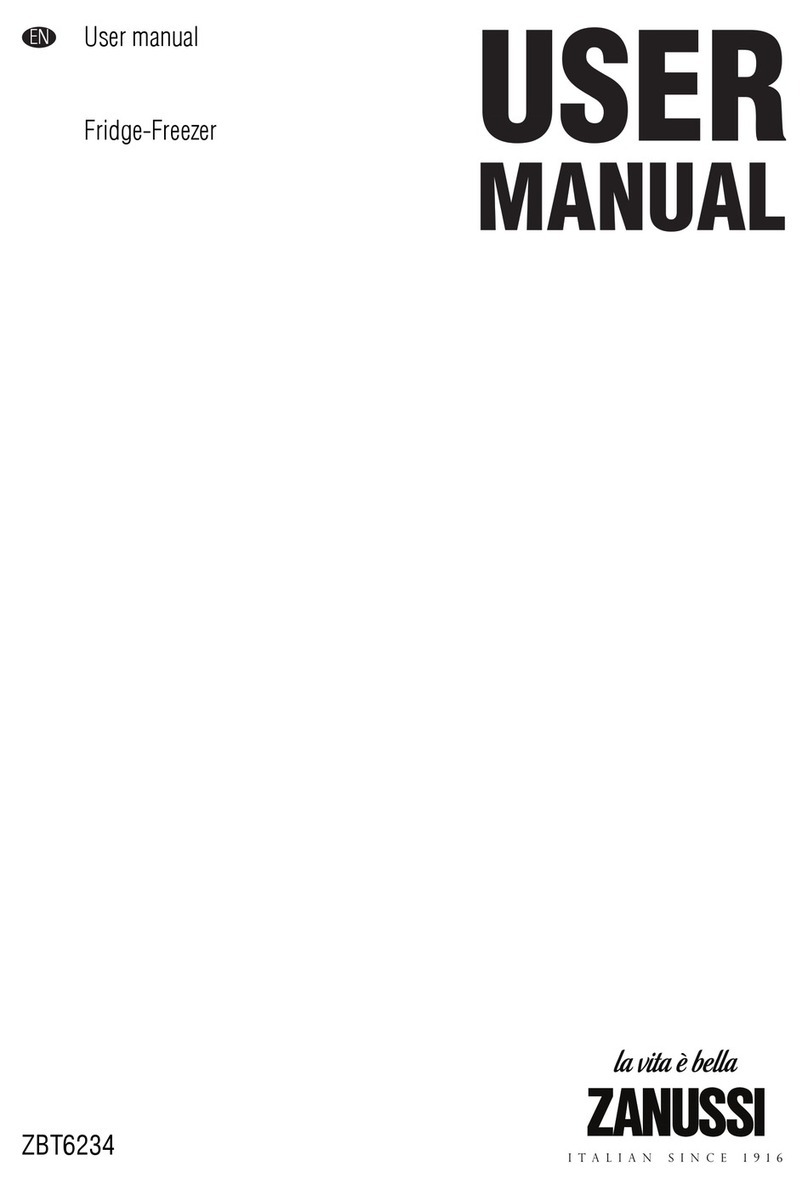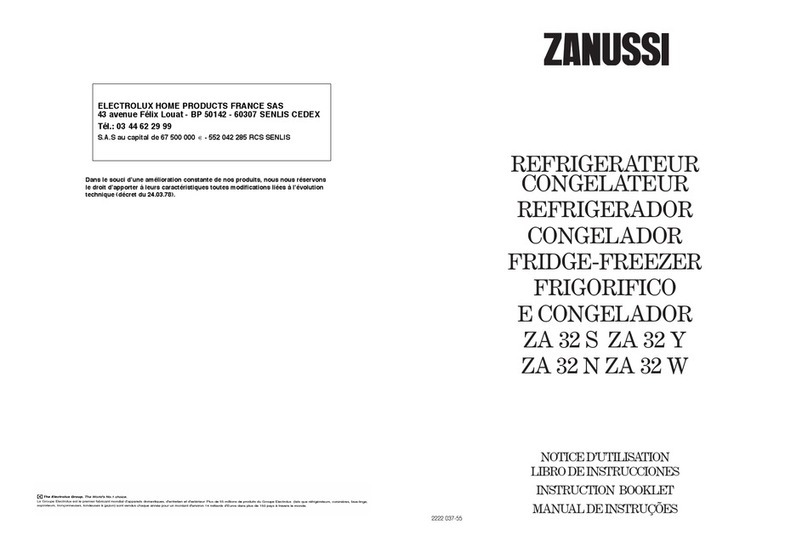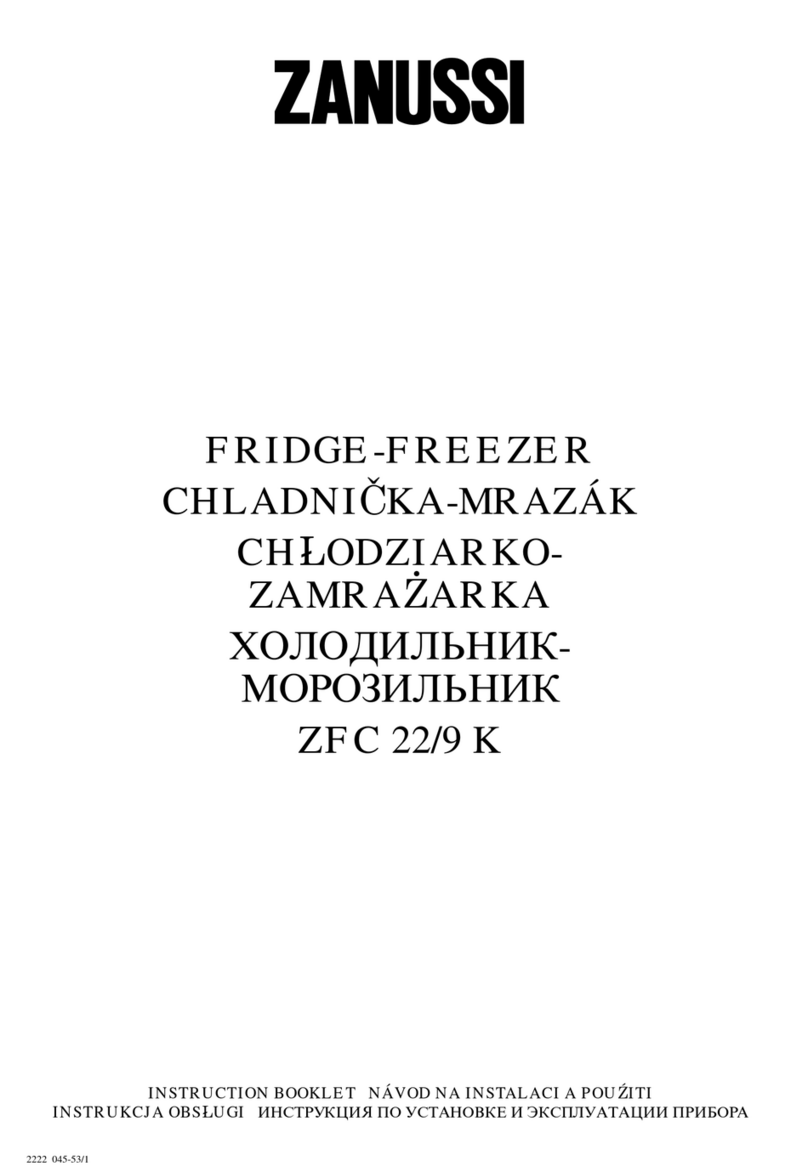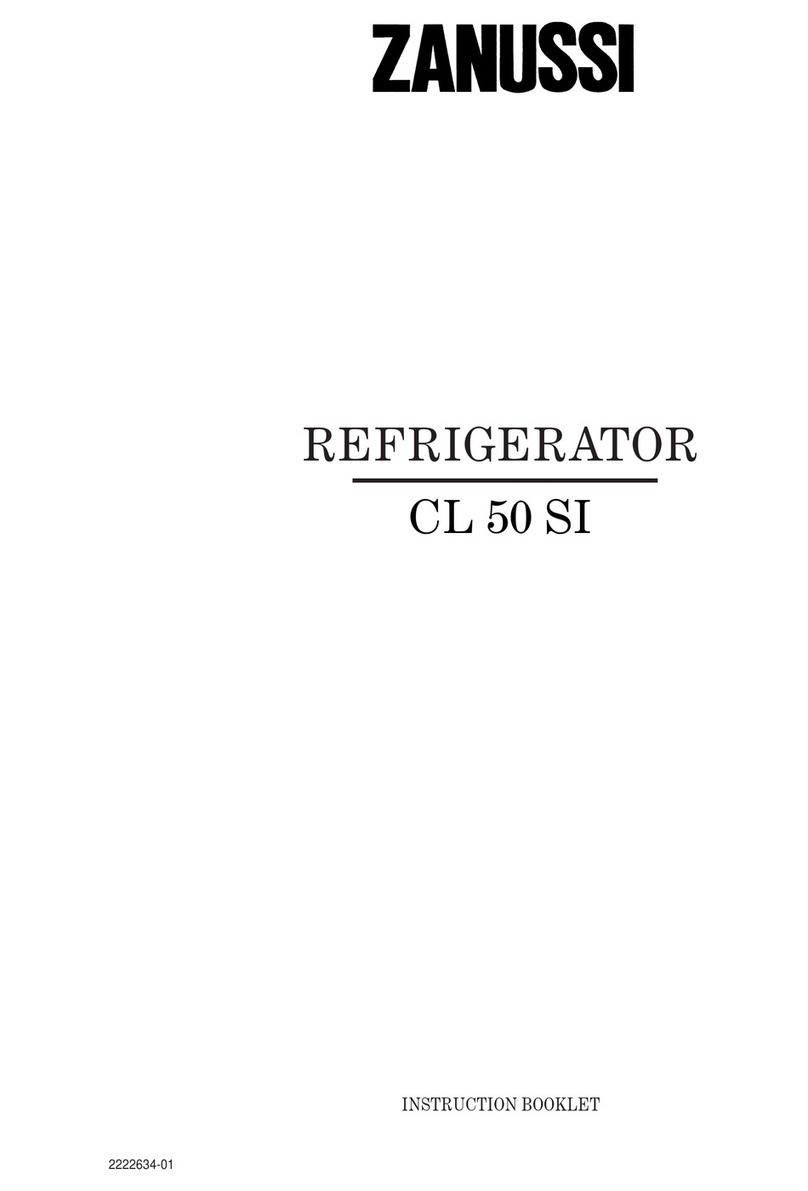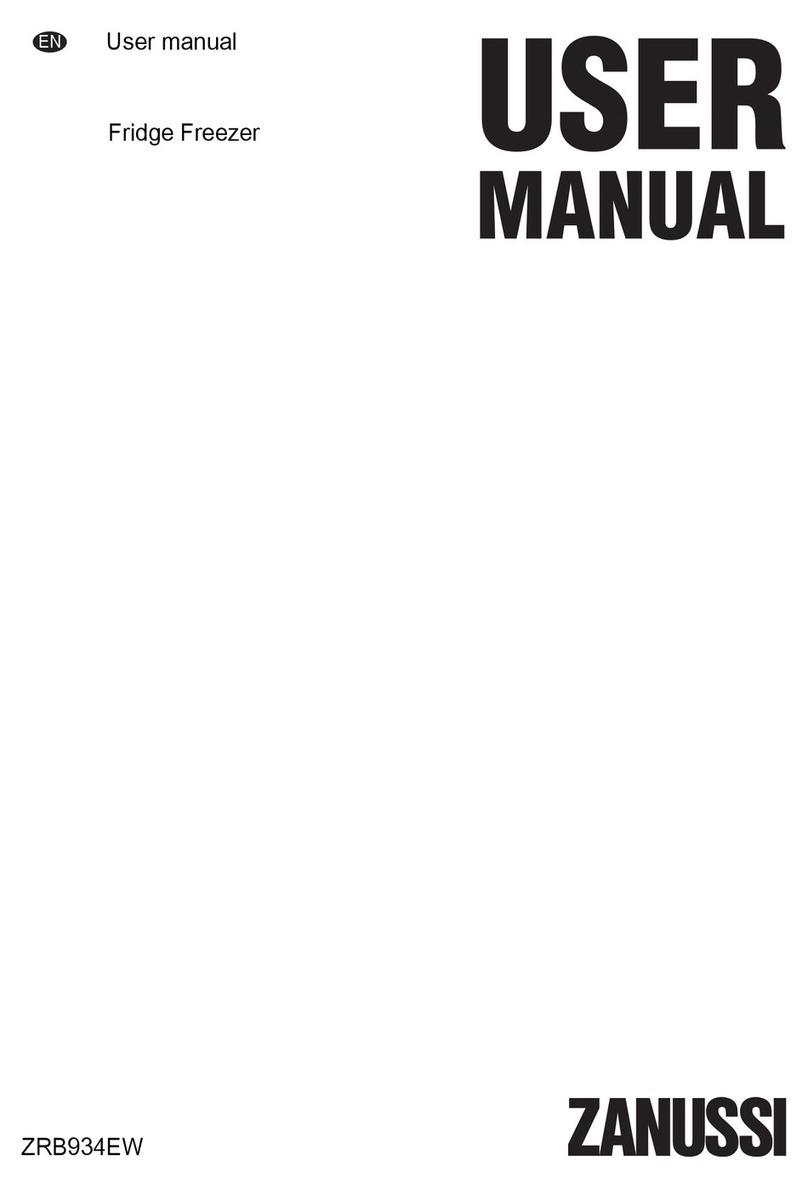5
Making ice cubes
The appliance is provided with one or more trays for
ice-cu es trays.
Fill the tray(s) 3/4 full to give the ice space to expand
and place them in the freezer compartment.
To release the ice cu es simply give the tray a slight
twist.
Do not use sharp or metallic instruments to remove
the trays from the freezer.
Fresh ood re rigeration
To o tain the est performance, do not store warm
food or evaporating liquids in the refrigerator; do
cover or wrap the food, particularly if it has a strong
flavour.
Do not cover the shelves with any protective
material, such as paper, card oard or plastic, which
may o struct the air circulation through them.
To help you use your refrigerator correctly, here are
some more useful hints:
Raw meat ( eef, pork, lam & Poultry): wrap in
polythene ags and place on the glass shelf on the
top of the salad crispers.
Meat can only be stored sa ely in this way or
one or two days at the most.
Fruit & vegeta les: these should e thoroughly
cleaned and placed in the salad crispers.
Butter & cheese: these should e placed in special
airtight containers or wrapped in aluminium foil or
polythene ags to exclude as much air as possi le.
Milk ottles: these should have a cap and should e
stored in the ottle rack on the door.
Thawing
Frozen food, prior to eing used, can e thawed in
the fridge or at room temperature depending on the
time availa le. Small food items may even e cooked
from frozen; in this case cooking will take longer.
Any frozen food which is allowed to thaw accidentally
should either e eaten as soon as possi le or thrown
away. Alternatively, if the food is uncooked and has
not een completely defrosted it can e cooked and
then refrozen.
Meat, fish and fruit should e thawed in the
refrigerator compartment and small pieces of meat
can even e cooked while still frozen, ut you must
ensure that it is thoroughly cooked through.
Vegeta les should e directly immersed in oiling
water; ready-cooked dishes can e placed directly in
the oven in their aluminium wrapping.
A microwave oven is particularly suita le for thawing
any type of frozen or deep-frozen food: follow the
oven instructions, particularly regarding the
Frozen ood storage
When first starting-up or after a period of non use,
efore putting the food in the compartment let the
appliance run for at least two hours on the coldest
setting, then turn the thermostat kno to the normal
operating position.
Do not exceed the storage period indicated y the
food manufacturer.
Finally, do not open the door frequently or leave it
open longer than is a solutely necessary.
Important
Do not put car onated liquids, (fizzy drinks etc.), in
the freezer compartment.
Ice Iollies, if consumed immediately after removal
from the freezer, can cause low temperature skin
urns.
Do not remove items from the freezer if your hands
are damp/wet, as this could cause skin a rasions or
“frost/freezer urns”.
Important
In the event of a power cut do not open the door. The
food in the freezer will not e affected if the power
cut is short and if the freezer is full. Should the food
egin to thaw, it must e consumed quickly and must
not e re-frozen. (See “Hits and Tips”)
placement of aluminium wrapping or containers in
the oven.
De rosted cooked ood must never be re rozen.
In any 24 hours you can freeze up to 9 kg. of fresh
food.
Place food to e frozen in the upper drawer of the
freezer as this is the coldest part.
Cold accumulators
The freezer contains two cold accumulators. Place
the cold accumulators in the FAST FREEZE
compartment. The cold accumulators increase
storage times in the event of a power cut or
reakdown.
Removal of these units wll increase the capacity of
the fast freezing compartment ut will reduce
storage times in the event of a power cut or
reakdown.
16
Door reversal directions
1. Disconnect from the electricity supply.
2. Gently lay the fridge/freezer on its ack with the
top held away from the floor y 5-8 cm (2-3
inches) of packing;
3. Remove the ventilation grill (D).
4. remove the ottom hinge (E) y unscrewing its
fixing screws;
5. Remove the freezer door y releasing it from the
middle hinge (H).
6. Unscrew the middle hinge.
7. Remove the fridge door y releasing it from the
top hinge pin (G).
8. Remove the pin then mount these on the side,
after having removed the small plugs which
should then e fitted on the opposite side.
9. reassem le the door;
10. using a 10 mm spanner, unscrew the hinge pin
(E) and reassem le it on the opposite side of the
hinge;
11.Refit the fridge door and replace the middle hinge
to the left hand side.
12.reassem le the lower hinge (E) on the opposite
side, using the screws previously removed. Slide
the hole cover (F) out of the ventilation grille (D)
y pushing it in the direction of the arrow and
reassem le it on the opposite side;
13.refit the ventilation grille (D), clipping it into place;
The doors can e aligned y adjusting the middle
hinge.
The middle hinge can e adjusted horizontally, after
having slackened the two screws with a screwdriver.
Important
After completion of the door reversing operation,
check that the door gasket adheres to the ca inet. If
the am ient temperature is cold (i.e. in Winter), the
gasket may not fit perfectly to the ca inet. In that
case, wait for the natural fitting of the gasket or
accelerate this process y heating up the part
involved with a normal hairdryer on a low setting.





